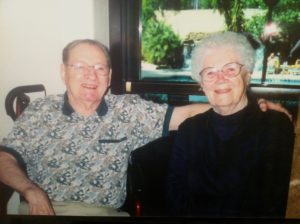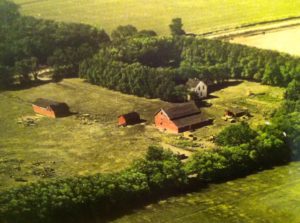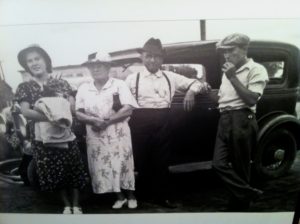Five years ago, near the beginning of Urban Monk, I read the near-death-experience (NDE) of Dr. Eben Alexander, titled Proof of Heaven. A year or so later he wrote a follow-up, called, Map of Heaven. (Clicking on the above names will link you to my reviews of these books.)
Now he has written another book, Living in a Mindful Universe. Here Dr. Alexander goes deeper into the implications of his incredible NDE, implications for this life here-and-now, on earth. I highly, highly recommend reading this book. It is filled with incredibly helpful information to help us all to “live in a mindful universe”. I cannot do justice to a full review of this book, but will share just a few insights gained from my reading.
The subtitle of the book is, A Neurosurgeon’s Journey into the Heart of Consciousness. He deals a great deal with the importance of consciousness. Keep in mind, Dr. Alexander is a neurosurgeon. He has delved academically and literally into the depths of the human brain. He deals at length with the questions of the connection between the brain and human consciousness, and with the location of memory inside the brain.
His NDE helped him realize that consciousness is separate from the physical brain. After all, his brain was almost completely deteriorated in the course of his illness. Especially the neocortex, the most advanced and most evolved areas of the brain. His illness, bacterial meningoencephalitis, “ate” his brain from the outside in. That is, it destroyed first the outer, neocortex layers of the brain. “Such a complete inactivation of my neocortex, the outer surface of the brain, should have disabled all but the most rudimentary experiences and memory…” (p xiv). And yet, during the time his brain was being destroyed he experienced a most vivid and ultra-real supernatural experience. The memories of this NDE persisted so strongly that “. . . I was driven to find an explanation for the journey I took during the coma. . .” (p xiv). “This very real experience happened, and I was conscious of it–and my consciousness did not depend on having an intact brain.” (p xv)
His medical and academic studies had not led him to any sort of a belief in anything outside the prevalent materialistic, scientific world view. So began his pursuit of answers to the questions of physical brain, consciousness and memory.
Science has thus far not been able to locate any area of the brain which contains memory. And yet Eben came out of his coma with such incredibly vivid memories, that he was led to conclude that there must be another location for our human memory and consciousness. His experience had been vastly different than his intellectual training.
“There is a considerable difference between believing something, and knowing it. It is crucial not to simply believe what others say and then adopt those beliefs, including everything stated in this book. It is most beneficial to learn firsthand, to cultivate and trust personal experience in order to develop an inner capacity of knowing. Each of us will proceed on a slightly different path, according to unique motivations and goals. Letting go of ingrained beliefs can be extremely valuable in order to comprehend a situation from a fresh perspective. In fact, this is what science is all about. A truly open-minded scientist considers all available evidence before making any judgment. (p 36)
He knew what he had experienced; he had such vivid memories resulting from his NDE. So he had to question the beliefs of his chosen field. Along the path of discovering more about NDE’s he encountered all the issues often arising from these experiences, including the concept of reincarnation.
This phenomenon of reincarnation supports the observation that memories do not seem to be stored in the physical brain. Finding a location for memories within the brain has completely eluded neuroscientific efforts. Just as filter theory allows that the brain is not the producer of consciousness, likewise, we use the brain to access memory from an information field (e.g., the quantum hologram or Akashic record) that exists outside of it. . . . This is not simply a discussion of what one wants to believe, but, as much as possible, we must address the world as it is. We must consider that reincarnation is apparently something that happens to us all (with or without our belief in it) and offers a richer view of our lives here on earth. (p 182)
Another concept he wrestled with is that we make decisions as souls prior to entering our life on earth. We choose the time and place to be born, and the outlines of what hardships we will encounter in order to learn certain lessons from this particular life.
Recognition that the soul lessons resulting fr0m the hardships, struggles, and conflicts in life might serve a purpose offers great insight in living our lives. And the more open you are to accepting the opportunities that these challenges present to become stronger, the more you are able to spare your future lives that continued suffering. If a particular lesson wasn’t properly learned, you might plan an even more daunting situation in the next lifetime. Should you successfully learn the lesson, it would never have to be repeated again and you could move on to the next challenge.
This concept may seem counterintuitive, especially when it comes to extreme hardship and adversity. We might find it difficult to accept that we have intentionally planned less than ideal situations for ourselves. But when we make these plans, we have full knowing that the situation will be temporary and we will be generally unaware of the underlying arrangement during life. To add to the confusion of programmed forgetting, often we choose an experience opposite of something we wish to learn in order to understand from a different perspective. From the vantage point of here and now some of our decisions seem to be illogical, but nonetheless a pragmatic choice at the time it was made. (p 189)
We are all essential to this evolution of consciousness, and we cannot simply opt out. No one gets out of here dead–there is ultimately no escape from the continuum of conscious awareness. It is wise to embrace this glorious gift of physical life, and to rise to the challenges it presents to afford the possibility of true learning, growth, and transcendence. This is not to say such a thing is easy, especially in our modern culture. (p 204)
He goes on then, together with his coauthor, Karen Newell, to discuss ways in which we can participate more fully in the awareness of our own consciousness. These methods include listening to recordings called, “brain-wave entrainment audio recordings”, which Karen Newell helped develop. He also goes briefly into methods and disciplines which others have developed. But he stresses the importance of getting in touch with our own higher selves, with the wider consciousness which is out there. “. . . that informational substrate underlying our universe appears to be made of profound unconditional love. Those who have been to that brink and peered beyond, whose emotional state has been resonant with that infinite love, never forget that experience–they are forever changed. They know they are one with the universe.” (p 227)
We can all come to see the hardships in life, illness, and injury as the stepping-stones on which our souls can grow and ascend toward that oneness with the Divine. (p 237)
Then, quoting Ram Dass, he cautions,
Got to be careful not to go through the door of enlightenment too fast; that would be going through the door with your ego on. Good way to get delusions of grandeur, a messianic complex, to wind up in a mental institution. You’ve got to be really pure. You can’t just make believe you’re pure. (p 247)
All in all, a very profound book, well worth seeking out and reading it. I’d appreciate hearing any reactions to the book.



